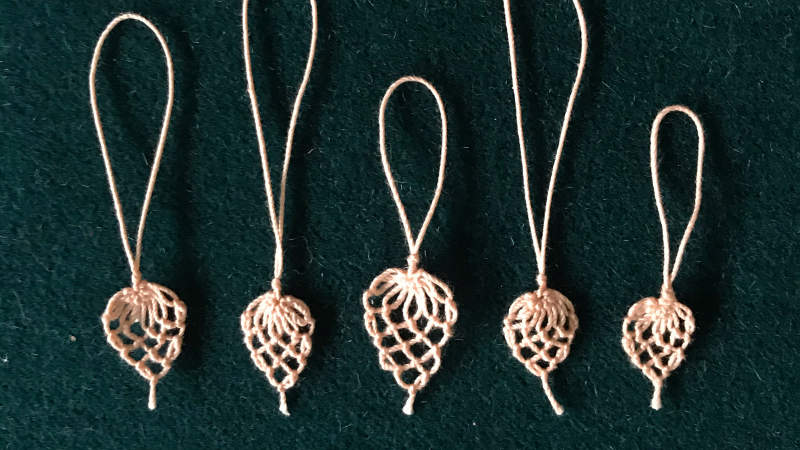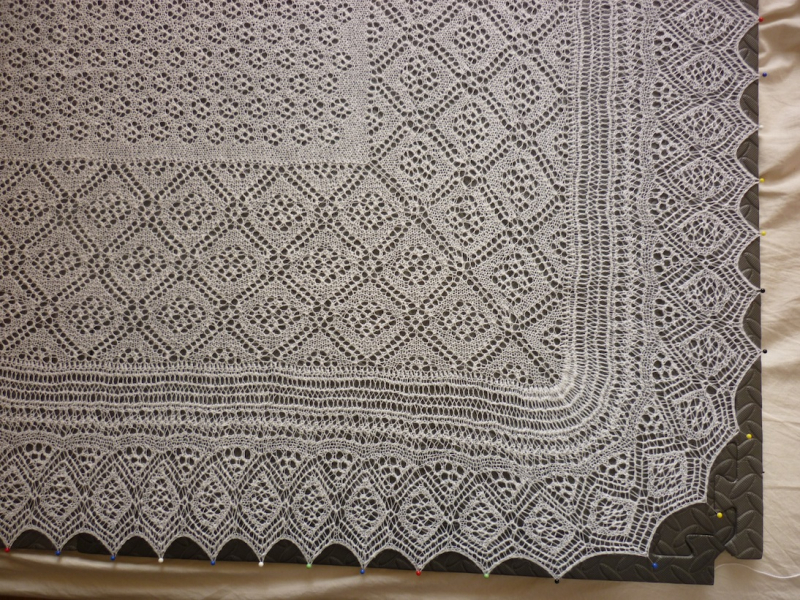Armenian needlelace
Armenian needlelace, like Lacis, appears to be a direct successor of netmaking. Whereas lacis entails adding decorative threads to a net ground, Armenian needlelace includes decorating the net itself. There is archaeological evidence that lace was used in prehistoric Armenia, and the prevalence of pre-Christian iconography in traditional designs would surely indicate a pre-Christian origin for this art form. In contrast to Europe, where lace was reserved for the elite, lace was used to decorate everything from traditional headscarves to undergarments in Armenia. Lacemaking was thus a part of many women's life.
Lace is formed by tying knots, which are normally tied onto the previous round of the item, leaving small loops of thread on which to tie the following round of knots. Patterns are made by altering the length of the loops, removing loops from previous rounds, adding extra loops, and so on.
Lace can be made directly onto the hem of the fabric being edged when used as an edging. When beginning a doily or freeform object (such as the birds and flowers that adorn traditional headscarves), a succession of loops is tied onto a slip knot and pulled tight to complete the first circle.













